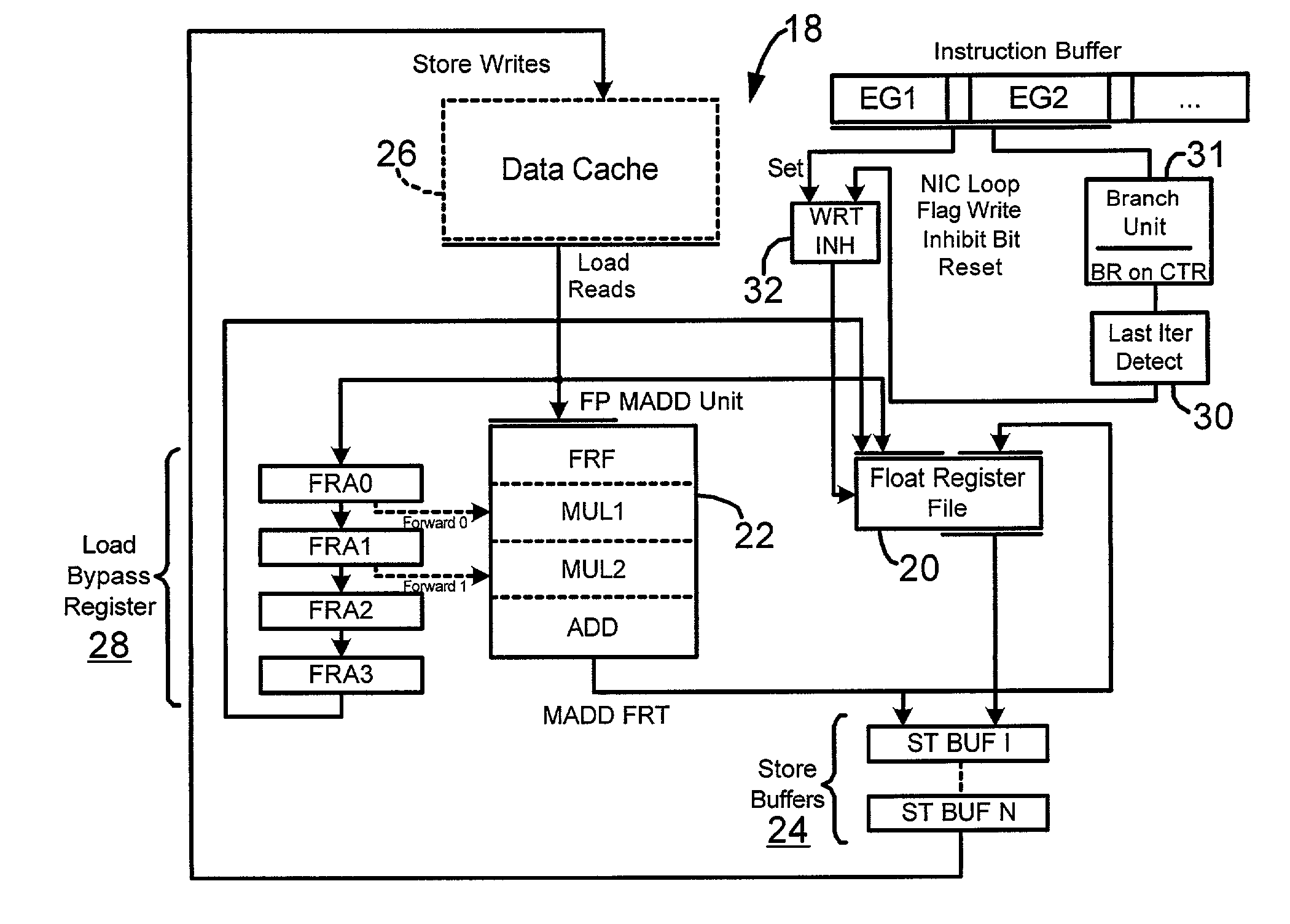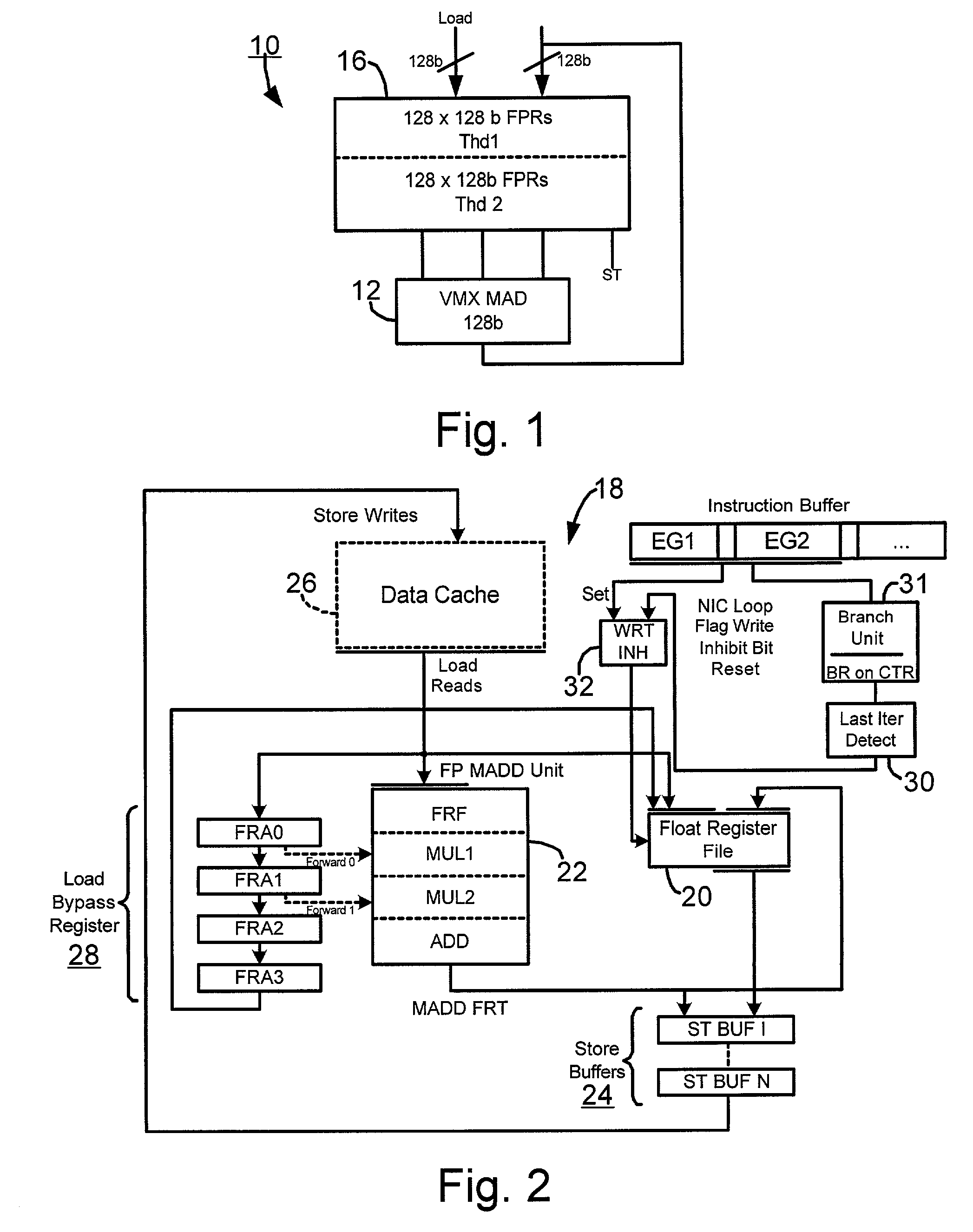Floating point unit power reduction via inhibiting register file write during tight loop execution
a register file and power reduction technology, applied in the field of computer processors, can solve the problems of exacerbated problems, significant overhead, and add to the manufacturing cost of the processor, and achieve the effects of reducing power consumption, minimizing component usage and power consumption, and robust system and method
- Summary
- Abstract
- Description
- Claims
- Application Information
AI Technical Summary
Benefits of technology
Problems solved by technology
Method used
Image
Examples
Embodiment Construction
[0018]A preferred embodiment of the invention is now described in detail. Referring to the drawings, like numbers indicate like parts throughout the views. As used in the description herein and throughout the claims, the following terms take the meanings explicitly associated herein, unless the context clearly dictates otherwise: the meaning of “a,”“an,” and “the” includes plural reference, the meaning of “in” includes “in” and “on.”
[0019]With reference to the figures in which like numerals represent like elements throughout, FIG. 1 is an exemplary floating point unit (FPU) 10 having two sets of 128b registers, and VMX MAD 12 (128b registers). The FPU is on a common processor that includes the FPU and floating point registers 16, and one or more source registers. In FPU 10, 4 read and 2 write ports are required for a single FP unit and 8 read and 4 write ports to support 2 FP units. The present invention allow reduction in overall FPR power consumption during intensive loop processi...
PUM
 Login to View More
Login to View More Abstract
Description
Claims
Application Information
 Login to View More
Login to View More - R&D
- Intellectual Property
- Life Sciences
- Materials
- Tech Scout
- Unparalleled Data Quality
- Higher Quality Content
- 60% Fewer Hallucinations
Browse by: Latest US Patents, China's latest patents, Technical Efficacy Thesaurus, Application Domain, Technology Topic, Popular Technical Reports.
© 2025 PatSnap. All rights reserved.Legal|Privacy policy|Modern Slavery Act Transparency Statement|Sitemap|About US| Contact US: help@patsnap.com


